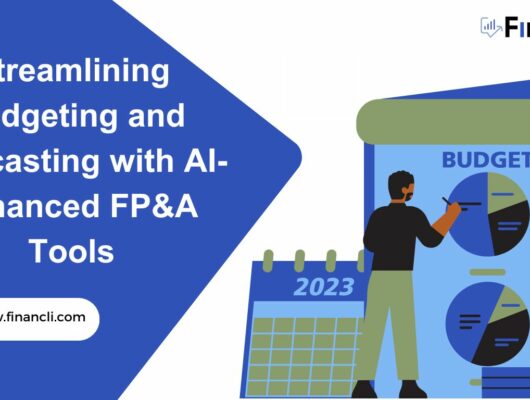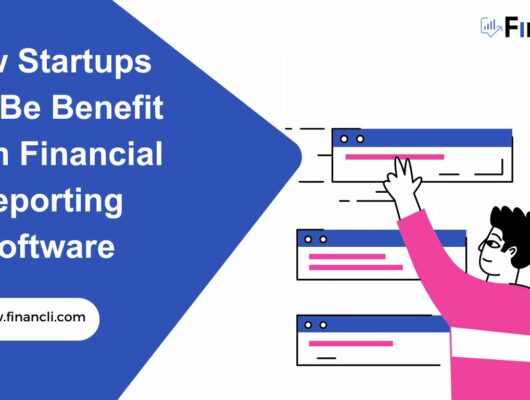Financial growth is the benchmark that differentiates business as struggling or successful. Business owners spend countless sleepless nights worrying about their finances. However, they understand that their decisions directly or indirectly affect their financial performance.
It is important for companies to have all their transactions and financial data compiled in one place to make it easier for all team members to access, view, and review this data. However, this data must be precise, comprehensible, and accessible, as required. The evolution of business intelligence has led to smarter and smoother software-driven businesses. One such software is the financial performance dashboard.
Financial performance dashboards measure the performance of an enterprise. It allows finance teams to track and report their financial key performance indicators. In addition, dashboard software supports and assists the finance team in their work. Let us explore some reasons why your business may need a financial performance dashboard.
1. Quick Analysis of Finances
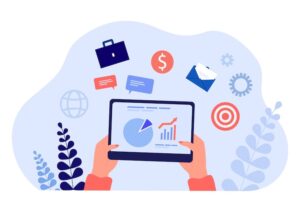
They say “time is money,” and it is rightly so. Where you spend your time measures your success. Imagine investing long hours in collecting and compiling financial records. You have no time left to prepare strategies for your business. Your company is losing its competitive edge because you are too busy to suggest a roadmap.
As a business owner, you anxiously wait for that significant report on this month’s sales. However, you know it will not be on your desk soon because your accountant is busy preparing it. In the meantime, your competitor has executed its new marketing strategy, which is already generating profit.
If you do not want this financial nightmare to be your reality, you must get your hands on dashboard software. Having a reliable financial dashboard can save you and your business. It efficiently collects and compiles data from multiple sources. This financial analysis is presented as interactive data in a concise and straightforward manner. You no longer have to wait for the quarterly financial reports even, because they are just a tap away.
Whether it is seeing business trends, reviewing sales, or just looking at your revenues, dashboard software does it all quickly. So look at your progress and discuss it with your teammates whenever you like it.
2. Sync with Financial Performance Indicators

Every enterprise outlines specific financial Key Performance Indicators (KPIs). In simple terms, Financial KPIs are guidelines for investments that benefit your business. It contains thresholds on expenses, profit margins, sales, and overall cash flow. If the values on your financial dashboard show results that align with your targets, you are good. Precisely, being in line with set KPIs determines business health.
The financial performance reporting software helps to evaluate the financial performance metrics. Studying the reports generated by the software reveals how your company is doing. Is it progressing according to your financial key performance indicators? If not, what should you do? If yes, that is good news, and you can congratulate your team on a successful work day.
3. Ease to Understand
A financial report and review is an absolute lifesaver. However, it may not seem like one if all the information it shows flies past your understanding. Unfortunately, most compiled reports are too complicated to understand in an instant. Luckily, many financial performance dashboards make financial analysis a piece of the cake.
Imagine a company meeting where the experts explain specific financial data verbally. They use “pet” financial and accounting terms to present their findings. Despite their efforts to communicate conclusions, members and stakeholders are blank because all the information is too much and difficult to understand.
The same presentation with graphs, pie charts, and lines is easy to understand. The precise, color-coded, interactive data explains statistics before the presenter speaks. This is how the dashboard design comes to the rescue. They have data visualization that shows sales your brand has generated or losses in the previous month.
This ease of comprehension benefits the accounts and finance team too. They explain fewer terms and use them to elaborate the data on the dashboard software.
4. Encourage Productive Discussions

The transparent representation of performance metrics that a dashboard presents prompts productive discussions. Team members have brainstorming sessions to understand policies that influence financial performance. Clear statistics allow team members to dive deeper into the reasons for particular data. It makes them ask important questions such as “what has caused these results” “how can we improve these numbers?” or “how do we maintain this quality?”
Asking the right questions yields the correct answers. When team members engage in productive discussions concerning eminent data, they make relevant decisions. These decisions drive action and produce better results. Thus, a performance metric starts a series of productive outcomes.
5. Eliminate Guesswork from Decision-Making

Making arbitrary decisions based on guesses in policy-making may be the last bad thing you do for your business. Guess-based choices are detrimental to a company since they have a high probability of error. Especially with money matters, clear and accurate decisions are necessary.
Data visualization in dashboard software allows you to consult statistics and use them to chalk out a plan. Your plans assist you in forming strategies and making data-backed decisions. You now have more room for adjustments and to rectify mistakes before they amplify. Each process follows the other, and eventually, you have a sound decision that will promise you success. Even better, you had an error-free financial analysis to aid in making those decisions.
Financial dashboards give you the data-driven power to increase, decrease, or change resources. They have your back in allocating necessary funds, managing expenses, and other changes you make in the interest of your company.
Once you complete the decision-making step, you can access the quarterly financial reports to check how your business is doing. Given the data, you can either make modifications or continue as you were.
6. Prevent Over or Under-Spending
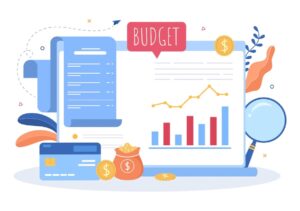
The real determining factor of your business is your money. As long as you have your money matters all sorted, you are safe. However, any neglected spending can get you in hot waters. An unbalanced allocation of funds results in losses and proves fatal for the enterprise. Real-time data visualization in dashboard software provides valuable insights into financial planning.
The financial performance dashboard shows a summary of expenses. It shows where your money went so you can divide it more intelligently in the future. By creating budgets and managing payments, you stay within set financial limits and prevent spending too much or too less.
A regular and quick review of financial data also reminds you to spend money where it matters most. Financial data planning is easy as the dashboard provides insight into loans, interests, and expenses. In addition, they keep you updated with your payables and receivables so that you can plan all your transactions smartly and equally.
7. Better Productivity

The innate knowledge that “red means bad” and “green means good” makes people work and strive to convert red into green. Financial dashboards use this primitive concept to depict areas of growth or retardation. Seeing a red arrow next to a performance metric means the particular area is underperforming. It affects your productivity and persuades you to perform to improve the results. Similarly, the sense of relief and motivation driven by a green arrow is incomparable.
Interactive data on the financial dashboard improves organizational productivity. It presents a precise financial analysis so you and your team know instantly what to do and how. Doing the right thing in less time is what productivity is all about, and a financial dashboard delivers just that.
Numerical presentation of performance makes employees mindful of their work’s effects on the company. As a result, they have a better sense of responsibility toward their job. In a nutshell, simple visual data drives actions, decisions, and growth all at once.
8. More Profitability

As discussed above, financial dashboards help you analyze whether your business is performing in line with the set KPIs. They express all visible and invisible, direct and indirect aspects of performance as numerical values. These values reflect employee performance, planning and strategizing, and decisions. They help you analyze whether your efforts have paid off as revenues. If all is well, your dashboard will tell you so. If you need help, it will let you know what went wrong and where.
The precise dashboard design enables you to focus on your profitability. You have the freedom to regularly see where you are headed with eyes on the prize. Suppose your dashboard does not display the expected results. You can always go back or start over and devise a better strategy to generate profit.
9. Awareness of Trends

Financial analysis through dashboards enables you to identify ongoing economic trends. This is especially useful for investment businesses to see ongoing market trends and predict turnouts. It also allows companies to highlight areas where they have made more or fewer investments and analyze their results.
Financial trends assist in policy-making. By viewing where their money has gone and what it has produced, stakeholders sit together and decide their future direction. They understand how a particular investment has not paid off; or identify red flags in their approach. They see whether they need to allocate funds elsewhere or continue doing what they are.
All these elements are crucial in figuring out how a company is doing. In addition, they help stakeholders rectify issues before they become problematic. From quick reviews to detailed discussions, dashboard software helps identify patterns and threats.
10. Saves Considerable Time
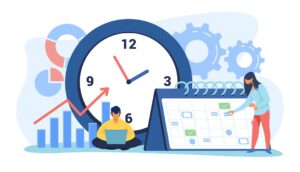
Unsurprisingly, the driving force behind all the automation we have today was to save time. Time is a valuable asset, and you want to spend it on something other than performing repeating tasks or trying to understand complex concepts. You would instead work smart instead of hard and use saved time on yourself or your loved ones. Thanks to the financial dashboard, this is now possible.
A typical financial dashboard design contains data visualization. This type of data is easily readable and understandable. It saves accountants time in explaining data and statistics. This saves time for team members who now understand what a particular value represents in about half the regular time. It has saved time for you, who can review your business’s health and decide earlier.
Dashboard software saves everyone time and allows them to invest it where it matters. Not only this, it reduces micromanagement. Employees no longer have to submit consistent updates of their work. Their productivity, or lack thereof, will be visible in the financial dashboard.
11. Encourage Motivation and Accountability

There are two types of motivations: intrinsic and extrinsic. Intrinsic motivation comes from inside. For example, a person does a job because it makes them feel good. External stimuli, such as praise, drive extrinsic motivation. Intrinsic motivation is purely individual. However, extrinsic motivation is what an organization can evoke using performance indicators.
Interestingly, financial performance dashboards serve many more purposes than portraying financial data. They bring a sense of motivation and accountability among employees and stakeholders. Satisfactory results on a financial dashboard are a source of encouragement for those who made it possible. It encourages appreciation and appraisal, essential to keep the spirits high. However, retarding trends inculcate performance reviews, and all relevant departments are accountable. Accountability paves the way for self-evaluation, and employees realize their shortcomings.
The TakeAway
Individuals and businesses rely on intelligent and accurate sources to manage their finances in today’s data-driven world. A financial performance dashboard is a source that depicts a complete financial analysis and allows you to review your expenses, profit margins, investment, and other economic activities.
An elaborate dashboard software, such as Financli, prompts better decision-making and helps you to make more informed financial decisions. Contact us today to acquire the best financial dashboard software that can help to improve your financial stability.





